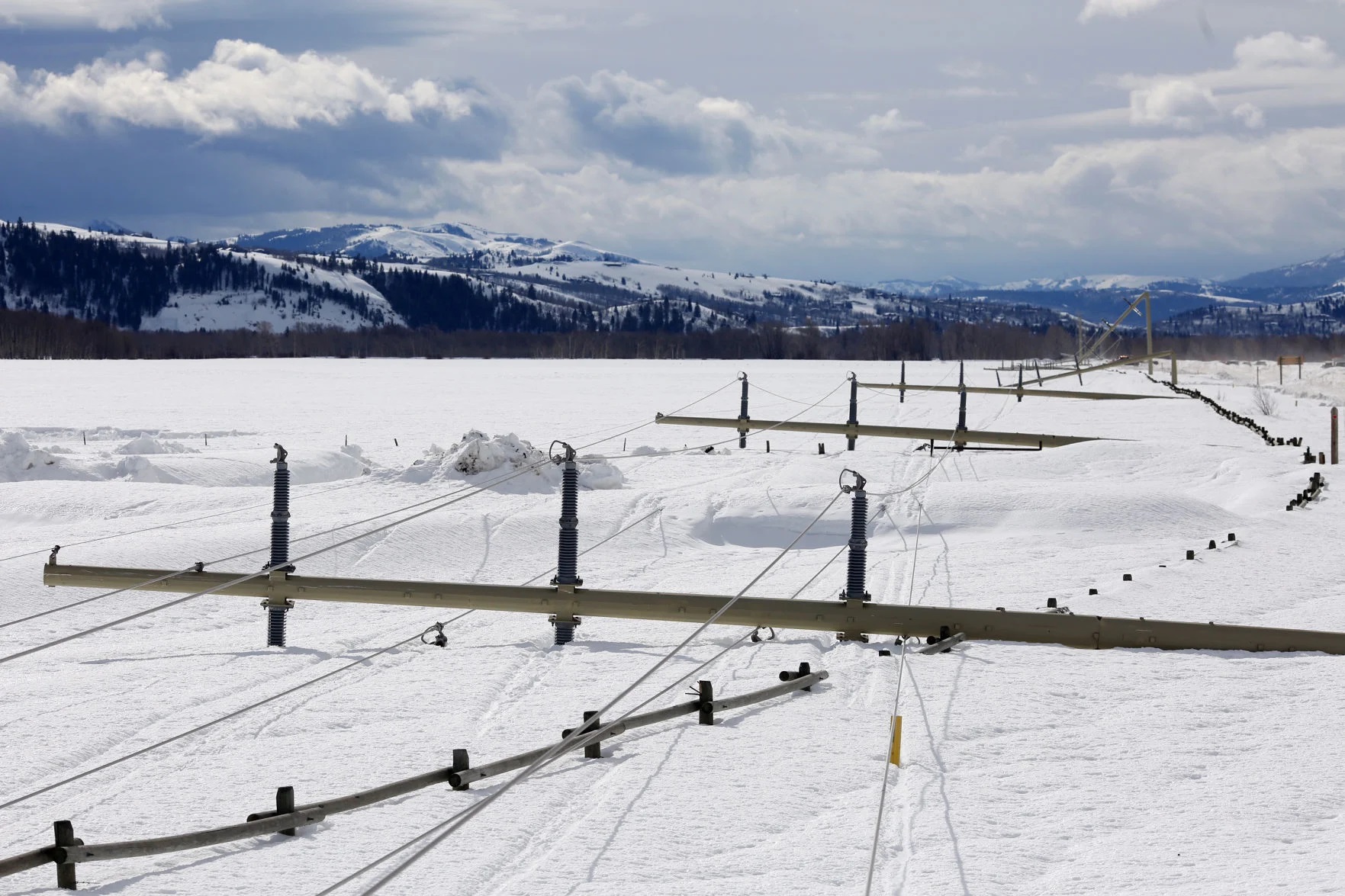Image credit: Stephen Williams, lights of Jackson WY seen from Snow King Resort
As utility workers scrambled to restore power to 75% of the residents of East Jackson, Wyoming a few weeks ago, temperatures plunged towards their forecasted evening low of -30°F. Lower Valley Energy, the local rural electric co-op, issued a plea for people to voluntarily reduce energy use across town to offset the loss of grid connectivity from the failed transformer. Teton County Emergency Management opened shelter locations to help offset the damage from what was shaping up to be a “perfect storm” of extreme cold temperatures and hundreds of homes and businesses without heat and power.
Thankfully, power was restored to most Jackson residents by 10pm on Sunday evening. Many went without heat for most of the subzero day but were able to endure the record cold temperatures by relying on neighbors with power or sheltering at the well-equipped emergency response locations scattered throughout town. A potentially deadly weather event was avoided through a prepared community response effort and a well-equipped electrical utility.
Despite flashy headlines during outages, we’re fortunate to benefit from a highly reliable electrical grid in the U.S. When grid outages do occur, what are the most practical solutions to manage the consequences? Flattening the electrical demand curve through energy efficiency measures eases stress on the grid and is one of the most economical and sensible solutions to weather these exceptional situations.
First step is energy conservation
Widespread adoption of building codes, construction practices, and weatherization efforts that reduce the overall energy demand should be the first objective in the pursuit for resiliency. Tighter building envelopes, improved insulation, triple-pane windows, and low energy heating solutions such as cold climate heat pumps reduce energy usage while improving comfort, reducing utility bills, and adding resiliency during extreme cold.
With the passing of the Inflation Reduction Act (IRA), now is the perfect time to increase your investment in home efficiency measures. The IRA has prioritized grid load shedding by providing substantial home electrification rebates and tax credits. Right now, individuals can take advantage of tax credits that prioritize high efficiency heating and cooling systems as well as weatherization upgrades such as air sealing, ventilation improvements, insulation, and window upgrades. Towards the end of 2023, funding from the IRA’s High-Efficiency-Electric Home Rebate Program (HEEHR) will be administered through State Energy Offices, providing upfront discounts when you make high efficiency electrification and weatherization upgrades. The HEEHRs point-of-sale rebates are immediate, off the top discounts and are available to low- and moderate-income households. These rebates are substantial and should be high on the list for anyone considering making electrification and weatherization upgrades. Find additional information and resources regarding the IRA incentives here:
• BuildingGenius - IRA program information
• Rewiring America - IRA incentive calculator
What about backup?
For decades, residential backup power in the event of an outage was primarily served by fossil fuel generators. These systems come with a long list of challenges and hazards, most notably, the extreme dangers of carbon monoxide poisoning. Research such as this study from the National Library of Medicine indicate that carbon monoxide poisoning from portable generators actually has the potential to take more lives than the natural disasters that prompt people to use them.
For those interested in a safer way to keep the lights on during an outage, batteries are emerging as a winning solution. Falling prices of lithium-ion batteries in combination with the recent battery backup incentives provided in the IRA have placed these systems within reach for many homeowners. In conjunction with efficient building envelope details and systems, a thoughtfully designed battery backup system can be a seamless and cost-effective option.

Image credit: Ryan Dorgan/Jackson Hole Daily, downed powerlines from a storm in February 2017 that resulted in a multi-day outage in Teton Village
How do we make sure no one gets left in the dark?
Community resiliency needs to be front and center in the conversation around natural disasters. Off grid capabilities are incredible goals for homeowners with the means to do so, but it is not economically feasible for most individuals. A whole community approach to power outages should be viewed through the lens of economies of scale and harm reduction principles, where centralized community shelters, equipped with the highest possible energy efficiency systems including super insulated envelopes and on-site energy production and storage can provide the maximum benefit. Communities should work with elected officials to ensure crisis management plans are established and emergency response plans are finely tuned and updated. Dialogues between electricity utilities and elected officials are critical to preemptively recognize potentially weak points in the electrical grid, and to establish communication protocols during extreme weather events.






























